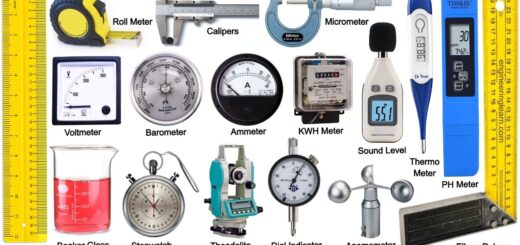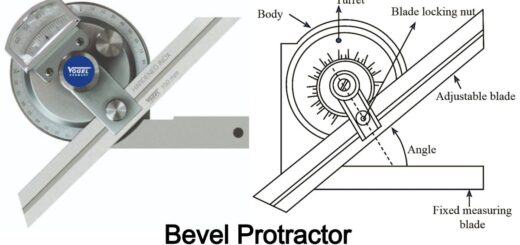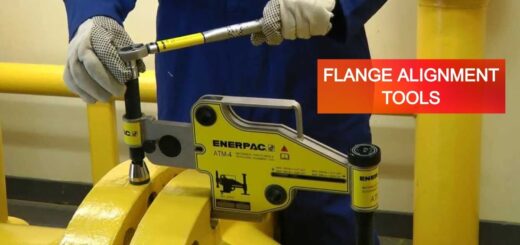Jigs and Fixtures: Types of Fixtures & Types of Jigs with [Materials, Purpose, Applications, Benefits]
![Jigs and Fixtures: Types of Fixtures & Types of Jigs with [Materials, Purpose, Applications, Benefits]](https://engineeringlearn.com/wp-content/uploads/2023/03/Jigs-and-Fixtures-1024x539.jpg)
What is a Jig?
Jigs and Fixtures: Types of Fixtures & Types of Jigs with [Materials, Purpose, Applications, Benefits]: – A jig is a device that holds and positions a workpiece while guiding and controlling one or more cutting tools. The work is carried out, and the tool is shown so that they are in positions relative to one other.
A jig is a plate, frame, or box made of metal or, in certain situations, non-metal that has facilities for handling the components in similar locations one after the other and then directing the wrong tool placed on the work by the design, specification, or operation arrangement.
What is a Fixture?
A fixture is a device that holds and locates a workpiece during an inspection or production process. The institution does not guide the tool.
The Fixture in construction consists of a different standard or mainly built work holding the device, which is fastened on the machine and capable of keeping the piece in place. The tools are positioned on the job by utilising gauges or manual adjustment.
Purpose of Fixtures
Fixtures’ primary function is to hold and secure the workpiece against movement. They also provide precise and repeatable alignment for machining processes and product interchangeability.
Fixtures are often used to keep the workpiece in place while machining. In certain circumstances, they also guide and assist the cutting tool’s movement while restricting access to extraneous items that may affect precision or quality.
Fixtures are critical production equipment that allows for automation.
An automotive assembly line, for example, would not be conceivable without the laborious fixtures that secure and guide automobiles through the welding and assembly process. Institutions may also be used to keep a product in place while optical and laser scanning is performed to evaluate production quality.
Types of Jig and Fixture
A) Types of Jigs
The six distinct kinds of jigs are listed below.
- Template jig
- Channel jig
- Plate Jig
- Diameter jig
- Ring jig
- Box jig
1. Template Jig: ( Types of Jigs )
The template jig is the most basic of the three. A plate 2 with holes in the necessary places acts as and is attached to component 1 to be drilled. Drill 21 is guided through template 2’s holes, and the needed fixes are trained on the workpiece in the exact locations on the template. The figure depicts a template jig.
2. Channel Jig: ( Types of Jigs )
The channel jig is seen in fig. It is a straightforward jig with a channel-like cross-section. Component 1 is inserted into channel 4 and is clamped by moving the knurled knob 5. The drill bush is guided by the tool 3.
3. Plate Jig: ( Types of Jigs )
1. A fixture secures and places the work while not guiding the tool. On the other hand, a jig holds, locates, and directs the agency.
2. The fittings are more robust and faster than the machine table. Jigs are made lighter for easier handling, and table clamping is sometimes excessive.
3. The fixtures handle work in milling, grinding, planning, and turning. On the other hand, jigs hold positions and guide the tool during drilling, reaming, or tapping operations.
A plate jig is a template jig that incorporates drill bushes on the template. The plate jig drills holes in massive items while keeping them precisely spaced.
4. Diameter Jig: ( Types of Jigs )
Its purpose is to drill radial holes in a cylindrical or spherical workpiece. Work 1 is put on the fixed V-block 6 and secured by the clamping plate 7, which also serves as a working locator. The tool is directed by drill bush 8 radially aligned with the task.
The leaf jig is seen in the preceding illustration. It features a hinged leaf or plate 13 on the body at 11, and the leaf may be swung open or closed on the work for loading or unloading reasons. Work 1 is held in place by set screws 12 and is positioned by buttons 10. The tool is guided by drill bush 3.
5. Ring Jig: ( Types of Jigs )
The ring jig is seen in the preceding illustration. It is used to drill holes in circular flanged components. The work is tightly secured to the drill body, and the holes are drilled by directing the tool through drill bushes.
6. Box Jig: ( Types of Jigs )
The box jig is seen in the preceding illustration. The component is positioned by button 18 inside a box-like structure. Work 1 is clamped by moving the cam handle 19, which also serves as a locator. The tool is guided by drill bush 3. Box jigs are often used to drill many holes in a component from various angles.
B) Types of Fixtures
The ten various sorts of fixtures are as follows:
- Turning fixtures
- Broaching fixtures
- Milling fixtures
- Grinding fixtures
- Indexing fixtures
- Boring fixtures
- Duplex fixtures
- Tapping fixtures
- Welding fixtures
- Assembly fixtures
1. Turning Fixtures: ( Types of Fixtures )
Regular workpieces on lathes are easily held in typical job holding devices such as chucks and collectors, between the centre and on mandrels or faceplates. However, oddly shaped components provide several challenges in effectively retaining them.
Simple odd-shaped work may also be retained in a chuck, for example, by appropriately adjusting the jaws of a four-jaw chuck or by employing contoured soft jaws. On the other hand, workpieces with intricate shapes must be kept in place with the assistance of rotating fittings. These fixtures are often installed on the machine spindle’s nose or a faceplate, and the workpieces are held in place by them.
The Fixture may need a counterweight to balance the unbalanced Fixture when required. These fixtures should be carefully designed to be rigid enough, with minimal overhang, to grip the workpieces very firmly, not to carry any dangerous projections for the machine operator or tool or both, and to provide proper support to him during the operation to thin and weak sections of the workpieces.
2. Broaching Fixtures: ( Types of Fixtures )
These fixtures are used on many broaching machines to locate, hold, and support the workpieces during operations such as keyway broaching, whole broaching, etc. A clamping plate is used as a fixture for internal pull-type whole broaching.
3. Milling Fixtures: ( Types of Fixtures )
These milling fixtures are used to perform various milling operations on workpieces. The Fixture is appropriately positioned on the machine’s table and fixed using nuts and bolts.
The table is adjusted and positioned correctly about the cutter. Before beginning the process, the workpieces are placed at the base of the Fixture and clamped.
The clamping components are used because the cutting pressures are relatively large and intermittent. The two tenons supplied beneath the fixture base are customarily used to locate the Fixture on the machine table properly. These tenons enter a T-slot in the table to provide the needed position. T-bolts and nuts are then used to fasten the fixture base to the table.
4. Grinding Fixture: ( Types of Fixtures )
These fixtures might be ordinary work-holding devices like chucks, mandrels, shaped jaw chucks, magnetic chucks, and so on.
A vertical surface grinder with a rotary table, for example, will often have a rotating fixture fixed to its table. Similarly, a surface grinder with a reciprocating table might have a simple string fixture. A drill grinding attachment is an obvious example of a typical institution used for drilling geometry grinding.
Whatever sort of Fixture is used for grinding, it should include facilities for coolant supply and exit, installation of wheel dressers, and, if it is a rotating fixture, it should be appropriately balanced.
5. Indexing Fixture: ( Types of Fixtures )
Several components must be machined on various surfaces such that their machined surface surfaces or shapes are evenly spaced.
Such components must be indexed in an equivalent number as the number of surfaces to be machined. The holding devices (jigs or fixtures) accommodate an indexing mechanism. An indexing fixture is a fixture that contains such a mechanism.
6. Boring Fixture: ( Types of Fixtures )
The surgery may be carried out in one of two ways:
- By being stationary with the boring bar (tool) and feeding the touting workpiece onto the bar.
- By remaining stationary with the workpiece and feeding the rotating boring bar into the work.
One of these uses the drilling jig technique, with the boring bar (tool) guided via a pilot bush. Boring jigs are another name for such a device. The alternative design makes it easier to hold the workpiece in an improper position relative to the boring bar.
Although this Fixture encompasses practically all of the standard concepts of jig and fixture design, its construction does not need to be as durable as milling fixtures since they never have to withstand as heavy cutting loads as required in milling operations.
7. Duplex Fixtures: ( Types of Fixtures )
The term given to the Fixture holds two comparable components simultaneously and allows for simultaneous machining of these components at two different stations. At the same time, just one workpiece is machined at each station.
According to the requirements, both processes may be identical or dissimilar. After machining at both stations is completed, the Fixture is indexed through 180 degrees, transferring the first component to the second station for the second operation and the final piece to the first station.
The completed component is uploaded here, replaced by a new member, and the first operation is done on it. The cycle is repeated indefinitely, allowing for relatively fast mass manufacture of components.
8. Tapping Fixture: ( Types of Fixtures )
Tapping fixtures are mainly designed to place and securely hold identical workpieces for cutting internal threads in drilled holes. Oddly shaped and imbalanced components will always need the employment of such fixtures, mainly if the tapping process on such features is to be done on a mass scale.
9. Welding Fixtures: ( Types of Fixtures )
Welding fixtures are meticulously constructed to hold and support the numerous components to be welded in precise positions while preventing distortion in welded constructions. The locating element must be cautious, the clamping must be light yet strong, and the clamping elements must be placed outside the welding region. The Fixture must be pretty sturdy and stiff to survive the welding forces.
In many circumstances, it is preferable to tack weld the structure first in a welding jig and then move it to a holding fixture for complete welding. This significantly reduces the likelihood of deformation and exposes the Fixture to less stress.
10. Assembly Fixture: ( Types of Fixtures )
The purpose of these fittings is to keep various components together in their appropriate relative location during assembly. Two or more steel plates, for example, may be riveted together in comparable areas.
Mechanical assembly fixtures are utilised to hold components while executing mechanical operations. In contrast, there are various sorts of institutions in which members are held for joining, such as welding fixtures, which are likewise assembly fixtures but for hot joining.
What Are the Advantages of Using Fixtures?
Fixtures can be used to hold small parts up to large pieces like blanks for pipe making; limit an object’s unwanted motion during use; aid in precision by restricting point loads on sensitive areas; and guide tools through complex passages without compromising their integrity when performing multi-dimensional milling tasks such as grinding, turning, and more.
Jigs and Fixtures are Made of the Following Materials
The following materials are used to create Jigs and Fixtures:
- Grey cast iron;
- Hardened steel;
- Carbide;
- Plastic;
- Epoxy resins
- Alloy steels with low melting points
- Stainless steel
- Bronze
Jig and Fixture Applications
Jigs and Fixtures may be used in a variety of disciplines, including:
- Automobile component mass manufacture.
- Continuous production part inspection in manufacturing businesses.
- In the steel factory, cutting ingots.
- In the refrigeration sector.
- For drilling the flanges and holes to any needed angles during the pump assembly process.
- Jigs used for mass drilling, reaming, and tapping.
- Jigs utilised for guiding the tools during machining contours.
- Fixtures for milling, turning and grinding operations.
Benefits of Jigs and Fixtures
Jigs and Fixtures have reduced the time required for manufacturing operations, made them more exact, and eliminated human error. The following are some of the advantages of using jigs and fixtures:
- Increase in output
- Consistent quality of produced items owing to reduced dimension variability
- Cost-cutting measures
- Parts interchangeability and excellent precision
- Inspection and quality control costs are significantly reduced
- A reduction in accidents due to increased safety standards
- Because of its essential manoeuvrability, semi-skilled people can use these instruments, lowering labour costs.
- The machine tool can be reasonably mechanised.
- Complex, stiff, and heavy components may be readily machined.
- Simple assembly processes save non-productive hours.
- Improves machine tool technical capabilities
- Multiple devices may be utilised on the same workpiece simultaneously.
- Higher values of various operating conditions, such as depth of cut, speed, and rate of feed, can be set due to the more excellent clamping capabilities of jigs and fixtures.
FAQs
1. In what ways are a Jig and a Fixture different from one Another?
A jig is a tool that guides the cutting or shaping of the material, while a fixture is another form of jig that shows the cutting or shaping of the material. Institutions are often used in the woodworking, metalworking, and machining industries. Using a fixture may often increase the production process’s precision and efficiency.
2. How do Jigs And Fixtures Get Made?
CNC machining is the most prevalent method of producing jigs and fixtures. However, 3D printing is widely employed in certain circumstances where the shape of an institution is not compatible or rapidly manufactured using CNC machining.
Metal is not required for all things. With its versatility and low cost, plastic is an excellent material for many applications.
Conclusion
Jigs and Fixtures are critical components of Manufacturing Technology. There are various elements to consider while creating a jig and fixtures. You may save a few minutes of manufacturing time by employing these. I addressed all of the crucial elements of Jigs and Fixtures in this essay. I hope you comprehend everything.
Content Source: – rapiddirect, wikipedia













